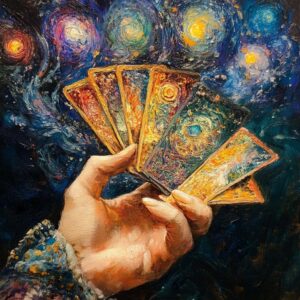
The common definition of a castle is a fortified private residence. The innovation of castles that began to be built in the Middle Ages was that the fortifications were not intended to protect an entire population but were built by local feudal lords to protect themselves or their kings.
The primary purpose of the castle was as a military and administrative center. The castle was designed to protect its inhabitants, but it also served as an offensive tool and often functioned as a regional command center from which the army could launch attacks on enemy territory.
European castles began to be built in the 9th century. Nobles built castles to control their territories and serve as bases for their armies. Soon, castles began to serve as local centers of governance and symbols of the rulers' power. Early castles utilized natural defense features such as mountains or rivers and did not include the towers or arrow slits that later became identifying features of castles, instead relying on a central keep. In the late 12th and early 13th centuries, a scientific approach to castle defenses began to develop, leading to the addition of many towers and turrets to the walls. Not all architectural features of the castle were intended for military purposes; some were designed to serve as symbols of power and grandeur. Only from the 13th century were arrow slits added to the walls, as before that, there was a concern that they would weaken the strength of the wall.
Toward the end of the Middle Ages, castles began to lose their defensive importance, mainly due to the development of cannons strong enough to breach their fortifications. As a result, the primary purpose of the castle shifted to being a residence and a display of power. Additionally, the aesthetics of the castle began to be more important than its fortifications, as its size and exterior appearance started to reflect the prestige and power of its occupant. Although castles could still defend against simple attacks, they began to be replaced by mansions and palaces.
The castle was usually built on a flat hill, called a Motte in French and English, to make it difficult for the enemy to approach. Sometimes the hill was natural, but in most cases, it was man-made. Digging the earth to create the hill formed a surrounding moat, which also served as a defense mechanism and was sometimes filled with water. Access to the castle on the hill was usually via a drawbridge or stone bridge stretched over the moat.
The keep, with its phallic shape symbolically representing the male aspect, power, and strength, was also known as the donjon and was the inner structure of the castle. Typically, it was a large tower with especially thick walls, built on the fortified hill, where the castle lord, his family, and his guests resided. The keep was the most important and secure part of the feudal castle. If the enemy breached all the castle's defenses, the inhabitants could take refuge in the keep, which was very difficult to penetrate.
Outside the keep was an inner courtyard, known in English as the Bailey, which also referred to the walls and cells, symbolizing the feminine aspect of protection and nurturing. In the courtyard, one could find the soldiers' and servants' quarters, stables, workshops, and storage rooms. Typically, there was also a water source such as a well or cistern in the courtyard. The courtyard had supplies that could last for a long time in case of a siege.
In Tarot, castles symbolize both the masculine aspect of power and strength (the keep), with its tower symbolizing high awareness and the pursuit of spiritual insights, and the feminine aspect of protection and nurturing (the inner courtyard, rooms, and walls). Castles represented strength, defense, security, and displays of power, prestige, and wealth, as well as tranquility and creation.
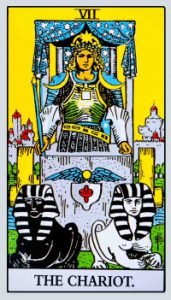
The Chariot card's power is amplified by the castle in the background. Although the charioteer has left the castle as part of his journey, he no longer needs physical security because he possesses inner confidence.
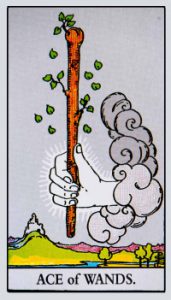
In the Ace of Wands card, the castle symbolizes the individual's desire for a home and family.
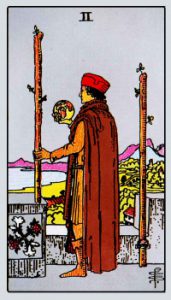
In the Two of Wands card, the castle symbolizes protection. It represents the stage where the individual is learning and needs a safe place to apply and realize their knowledge.
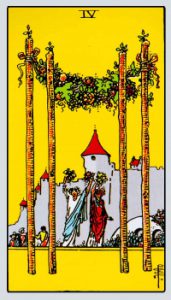
In the Four of Wands card, the castle symbolizes a stable and secure life, representing efforts that have borne fruit.
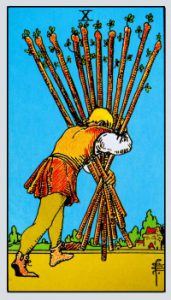
In the Ten of Wands card, the castle symbolizes the individual's aspiration for a home, family, and work life free from stress and tension.
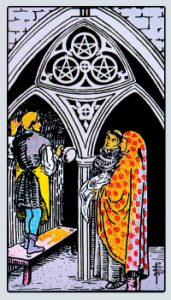
In the Three of Pentacles card, the castle symbolizes abundance, prestige, and wealth, as well as the creation and appreciation by others for the beauty of the castle.
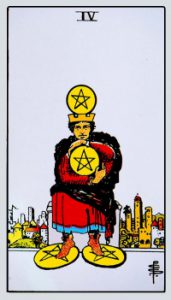
In the Four of Pentacles card, the castle symbolizes the abundance present in life, but it is behind the man, and he does not see it, clinging fearfully to his possessions.
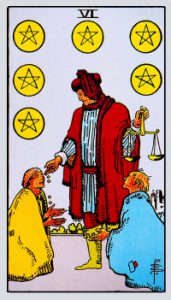
In the Six of Pentacles card, the castle symbolizes the wealth and power of the merchant. He lives in security, which allows him to give gifts to the poor.
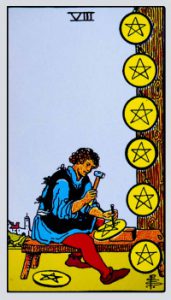
In the Eight of Pentacles card, the castle symbolizes the achievement that comes after hard and diligent work.
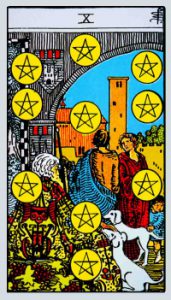
In the Ten of Pentacles card, the castle symbolizes both internal and external success, representing the continuity of achievements and prosperity.
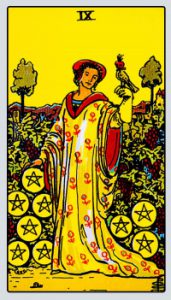
In the Nine of Pentacles card, the castle symbolizes the accumulated abundance, indicating a life of stability, security, and prosperity.
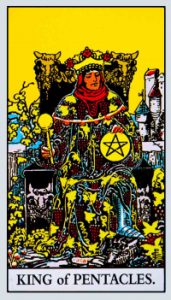
In the King of Pentacles card, the castle symbolizes protection and abundance, representing a display of wealth and material status.
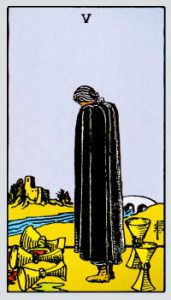
In the Five of Cups card, despair dominates, and the distant castle symbolizes what the person possesses but fails to see. The individual has abundance, security, peace, and creativity, yet remains blind to it.
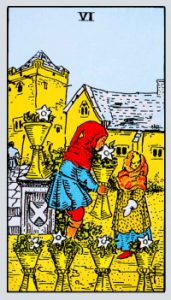
In the Six of Cups card, the inner courtyard of the castle symbolizes protection. This stage in the process involves a recurring lesson, but this time it is experienced in a secure and protected environment.
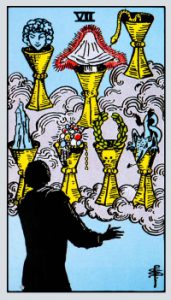
In the Seven of Cups card, the castle symbolizes the individual's awareness of the power and influence that illusions and dreams have over their life.
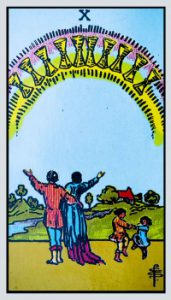
In the Ten of Cups card, the small castle symbolizes contentment with what one has. Material achievements are less important than spiritual and emotional fulfillment.
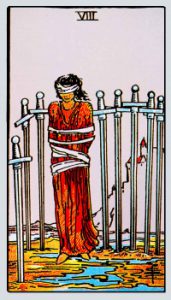
In the Eight of Swords card, the distant castle behind the blindfolded woman represents security and belonging. However, the fence of swords prevents access to that sense of security and belonging.
The question to ask yourself is, what kind of castle exists in your imagination? What type of castle have you built for yourself, both physically and spiritually? Have you erected walls to keep people out, or have you created a protected environment for those around you? Do you have guards in the towers or secret escape tunnels? Is your castle filled with an abundance of water and food? Most importantly, what kind of ruler are you—respected, benevolent, patient, or a ruthless dictator?
In conclusion, in seventeen cards out of seventy-eight tarot cards we find castles, therefore this symbol is very essential, the need for strength, protection, security and a display of power, prestige and wealth, peace and creativity brought Pamela Coleman Smith to draw so many castles on the tarot cards.

Orit Raphael, Tarot Reader for Personal Guidance, Insights, and Messages